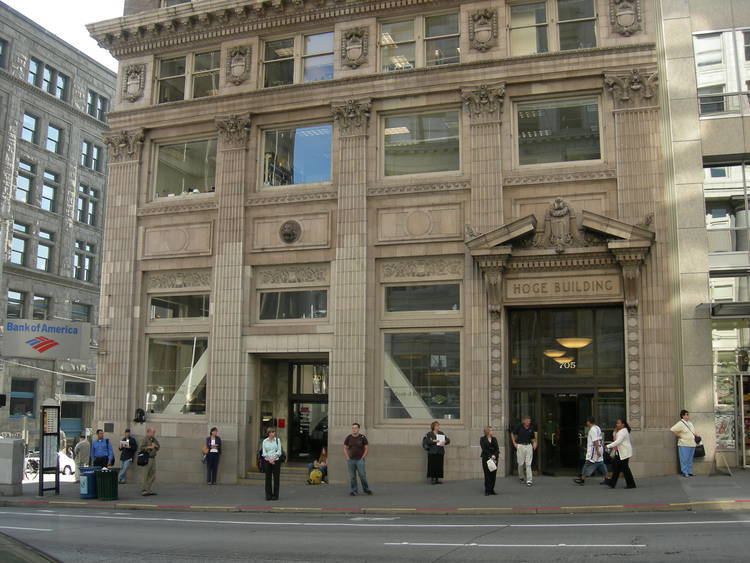Preceded by Alaska Building Named for James D. Hoge, Jr. Roof 205 feet (62 m) Opened 1911 Renovated 1992 | Completed 1911 Height 62 m Floors 17 Construction started 1909 | |
 | ||
Address 705 Second AvenueSeattle, Washington Similar Alaska Building, Smith Tower, Pioneer Building, Key Bank Center, Arctic Building | ||
The Hoge Building is a 17-story building constructed in 1911 by, and named for James D. Hoge, a banker and real estate investor, on the northwest corner of Second Avenue and Cherry Street in Seattle, Washington. The building was constructed primarily of tan brick and terra cotta built over a steel frame in the architectural style of Second Renaissance Revival with elements of Beaux Arts. During its construction, it was briefly the tallest structure in the state of Washington, until the completion of Tacoma's Key Bank Center later in 1911, and the tallest in Seattle until 1914 with the completion of Smith Tower.
Contents
Map of Hoge Building, Seattle, WA 98104, USA
History
The site of the Hoge building, at 705 Second Avenue, was the location of the cabin of Carson Boren, reputedly the first white man's house in what was to become Seattle. The cabin was later replaced by a row of 1 and 2 story shops facing Cherry Street which would all be destroyed by the Great Seattle fire. Hoge's uncle, John Hoge, a wealthy businessman of Zanesville, Ohio purchased the site soon after the fire and erected a three-story brick building to house his company: Washington Territorial Investment Company, The Seattle Post-Intelligencer, Washington National Bank, and several other small businesses. Hoge would form Union Trust & Savings Bank (later renamed Seattle Trust Bank and merged with Seafirst Bank) in 1903 which would become the ground-floor tenant of his new building.
Hoge commissioned the architectural firm of Charles Bebb and Louis Mendel to design the building. Construction began in March 1911. The steel frame of the building was constructed at an amazing pace, with all 18 stories completed in 30 days, a feat which broke all records at the time. Reportedly, the building was designed with special concern by the architects for seismic events as a result of the 1906 San Francisco earthquake.
One of the last branches of Dexter Horton Bank was housed in the building in 1991 after being moved from its own building. The ground floor currently contains a branch of Bank of America, successor to Seafirst Bank. The building was owned by the Hoge family until being sold in 1986.
